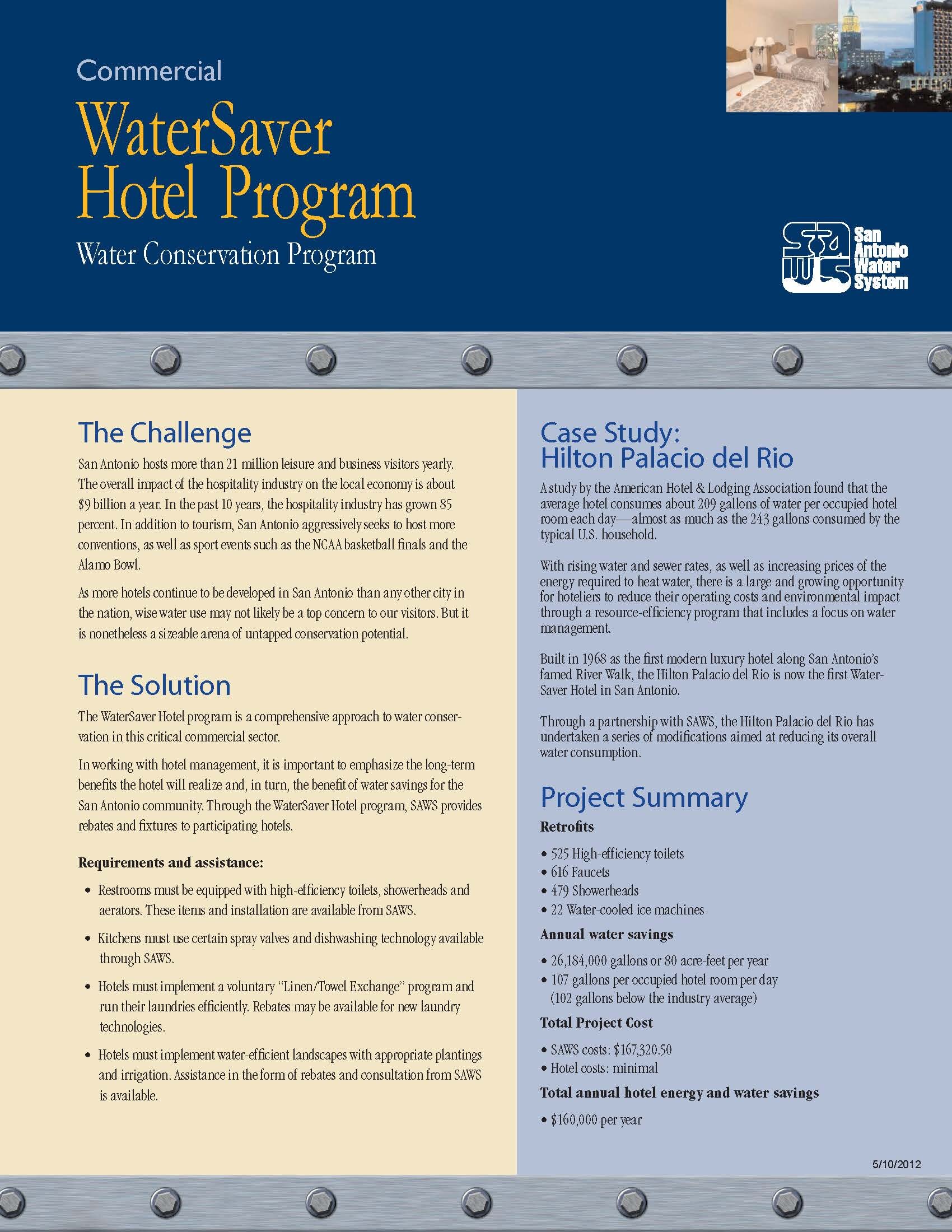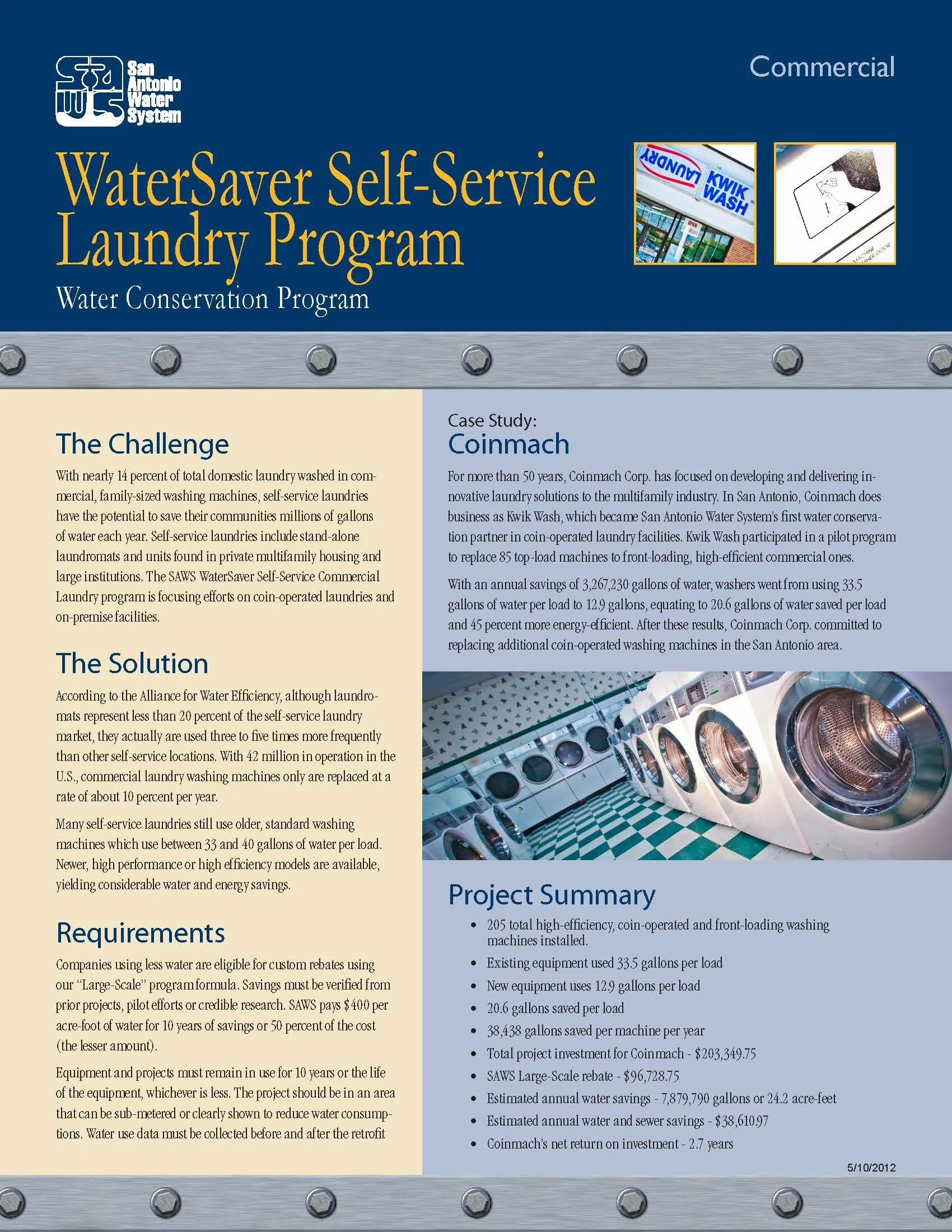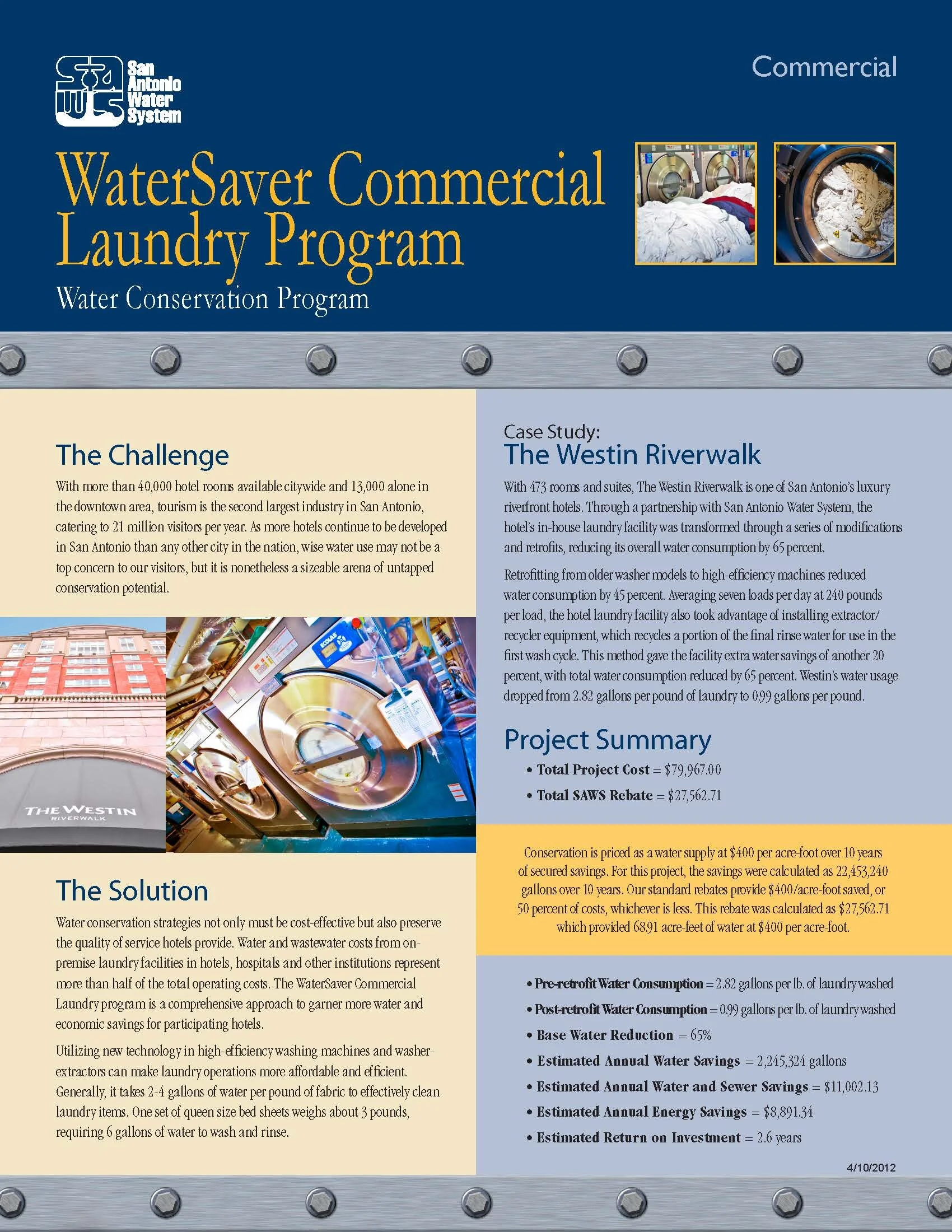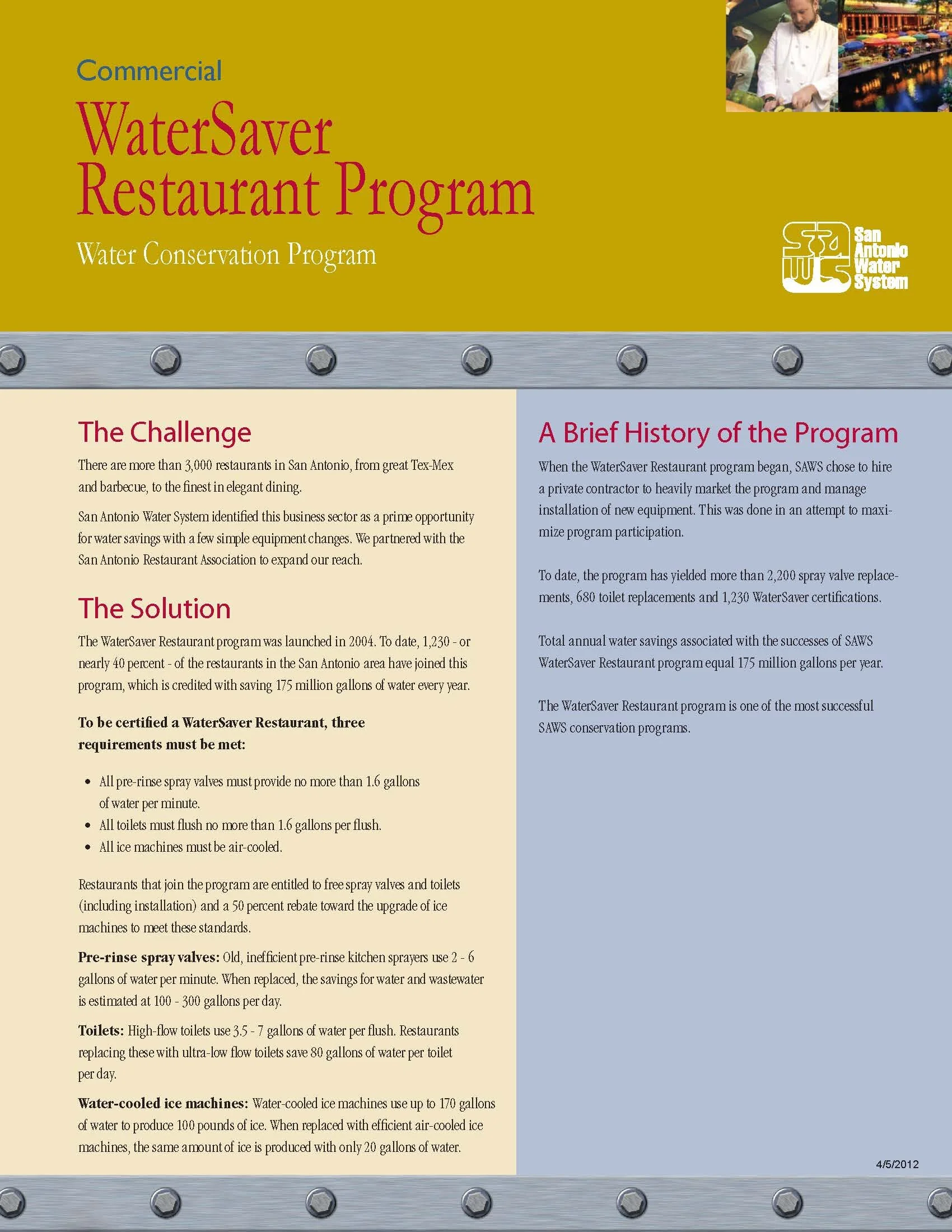This brief summarizes the need for and approaches to agricultural irrigation conservation.
Read MoreThis guidance document has been prepared to meet the requirement and is provided to retail water providers and certain other water use sectors as a guide for preparation of water use reports, water conservation plans, and reports on water conservation efforts.
Read MoreThis report presents the results of a study which analyzed annual seasonal single-family residential water usage in cities across Texas.
Read MoreThermal electricity generation is a major consumer of freshwater for cooling, fuel extraction and air emissions controls, but the life cycle water impacts of different fossil fuel cycles are not well understood. Much of the existing literature relies on decades-old estimates for water intensity, particularly regarding water consumed for fuel extraction. This work uses contemporary data from specific resource basins and power plants in Texas to evaluate water intensity at three major stages of coal and natural gas fuel cycles: fuel extraction, power plant cooling and power plant emissions controls. In particular, the water intensity of fuel extraction is quantified for Texas lignite, conventional natural gas and 11 unconventional natural gas basins in Texas, including major second-order impacts associated with multi-stage hydraulic fracturing. Despite the rise of this water-intensive natural gas extraction method, natural gas extraction appears to consume less freshwater than coal per unit of energy extracted in Texas because of the high water intensity of Texas lignite extraction. This work uses new resource basin and power plant level water intensity data to estimate the potential effects of coal to natural gas fuel switching in Texas’ power sector, a shift under consideration due to potential environmental benefits and very low natural gas prices. Replacing Texas’ coal-fired power plants with natural gas combined cycle plants (NGCCs) would reduce annual freshwater consumption in the state by an estimated 53 billion gallons per year, or 60% of Texas coal power’s water footprint, largely due to the higher efficiency of NGCCs.
Read MoreThis one-pager describes San Antonio Water System's rebate program for outdated, inefficient swimming pool filters.
Read MoreThe Texas mining industry, in addition to oil and gas, produces mostly lignite coal and aggregates (sand and gravel and crushed rocks). Operations always involve water, either as an aid in extraction or as a byproduct. A recent study compiled current water use in the various sectors of the mining industry and made projections for the next 50 years. The study concerned the upstream segment of the oil and gas industry (drilling, hydraulic fracturing, waterfloods), the aggregate industry (washing included but no further processing), the coal industry (pit dewatering and aquifer depressurizing), and other substances mined in a fashion similar to that of aggregates (industrial sand, lime, etc.), as well as through solution mining. Overall, in 2008, the industry used ~160 thousand acre-ft (kAF), including 35 kAF for hydraulic fracturing and ~21 kAF for other purposes in the oil and gas industry. The coal and aggregate industries used 20 kAF and 71 kAF, respectively. Mining of industrial sand dominates the remainder. Approximately three-fourths of the water used is consumed, and approximately two-thirds of the water consumed is groundwater. Projection estimates call for a steady increase in water use in coal and aggregate production and a sharp increase, followed by a slow decrease, in the oil and gas industry. Operators favor surface water when it is plentiful, but groundwater is a more drought-proof source. Because the various segments of the energy industry are spread out across the state, they impact many different aquifers. Mining withdrawals represent only ~1% of total withdrawals at the state level but can be much higher locally and compete with other uses, such as municipal usage or irrigation.
Read MoreThis one-pager describes San Antonio Water System's outreach programs and efforts to reduce landscape water use, including a case study from the San Antonio Botanical Garden.
Read MoreThis one-pager describes San Antonio Water System's program to reduce water use in local hotels.
Read MoreThis one-pager describes San Antonio Water System's custom rebate programs for self-service (coin-operated and on-premise) laundry facilities, including a case study from a local laundry facility.
Read MoreThis one-pager describes San Antonio Water System's commercial laundry rebate program, including a case study from a local hotel.
Read MoreThis one-pager describes San Antonio Water System's use of custom commercial rebates in a food manufacturing plant.
Read MoreThis one-pager describes San Antonio Water System's program to reduce water use in local restaurants.
Read MoreShale-gas production using hydraulic fracturing of mostly horizontal wells has led to considerable controversy over water-resource and environmental impacts. The study objective was to quantify net water use for shale-gas production using data from Texas, which is the dominant producer of shale gas in the U.S. with a focus on three major plays: the Barnett Shale (∼15 000 wells, mid-2011), Texas-Haynesville Shale (390 wells), and Eagle Ford Shale (1040 wells). Past water use was estimated from well-completion data, and future water use was extrapolated from past water use constrained by shale-gas resources. Cumulative water use in the Barnett totaled 145 Mm3 (2000−mid-2011). Annual water use represents ∼9% of water use in Dallas (population 1.3 million). Water use in younger (2008−mid-2011) plays, although less (6.5 Mm3 Texas-Haynesville, 18 Mm3 Eagle Ford), is increasing rapidly. Water use for shale gas is <1% of statewide water withdrawals; however, local impacts vary with water availability and competing demands. Projections of cumulative net water use during the next 50 years in all shale plays total ∼4350 Mm3, peaking at 145 Mm3 in the mid-2020s and decreasing to 23 Mm3 in 2060. Current freshwater use may shift to brackish water to reduce competition with other users.
Read MoreThis report presents the results of a study to identify and evaluate potential methods to assist the Texas Water Development Board and individual municipal water providers in evaluating the actual water savings being achieved by municipal water conservation efforts.
Read MoreThis publication describes the purpose and role of groundwater conservation districts in Texas.
Read MoreThis publication describes the science of groundwater in Texas, Texas groundwater law, and the roles and responsibilities of groundwater conservation districts.
Read More


















